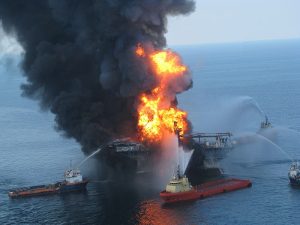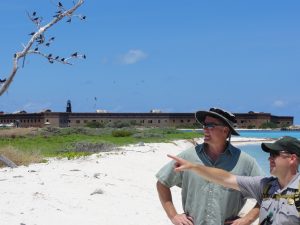Fireworks and Oil
 Coming up on the fourth of July, it’s all about watching fireworks. In many counties, drought has forced a burn-ban that precludes any legal displays, so many shows will be in high-definition from the air-conditioned comfort of the living room. No crowds and plenty of hamburgers. Every year, some of the displays telecast live from above remind me of what I was doing exactly several years ago that night.
Coming up on the fourth of July, it’s all about watching fireworks. In many counties, drought has forced a burn-ban that precludes any legal displays, so many shows will be in high-definition from the air-conditioned comfort of the living room. No crowds and plenty of hamburgers. Every year, some of the displays telecast live from above remind me of what I was doing exactly several years ago that night.
We probably all remember that the BP Deepwater Horizon exploded on April 20, 2010, killing 11 of the crew, sinking a few days later and setting off possibly the largest oil spill and response in world history: 210+ million gallons of crude flowed for three months, oiling 28,000 square miles of the Gulf of Mexico and over 1,000 miles of shoreline. At one point, 87,000 square miles of the Gulf were closed to fishing — that’s one-third of the Gulf. Over 50,000 responders were involved.
In support of the response, I was asked to serve as a Planning Specialist embedded with the U.S. Coast Guard in Sector Key West. I flew into Miami the night of July 4, and fireworks were going off as far as the eye could see. From several thousand feet, that was pretty far, and it was beautiful. So was the four-hour drive down to Key West.
Why Key West when everyone was working on oil in the upper Gulf coast? NOAA models were predicting a 61-80% probability of oil exiting the Gulf right across the Keys. My assignment was to coordinate and lead an intensive effort to prepare for the arrival of oil, possibly within a few weeks. The planning effort had to integrate “resource trustees” such as the National Park Service, U.S. Fish & Wildlife Service and the National Marine Sanctuary.
The good news is that we’ve never had a large oil spill in the Keys. The bad news is that almost no one there has ever worked or even seen one. The Keys are compact and spread across a wide area, and response logistics are tough: few open places to stage personnel and equipment; long travel times out to the islands, hot weather, hurricanes and tropical storms. The only road in or out is two-lanes – when it’s not under construction. Barging or boating equipment in from Miami takes days.
If you haven’t been to the Keys, you cannot appreciate the fragile and diverse

Harris with NPS Bush Key and Fort
ecosystems found in the Dry Tortugas National Park, the Marquesas Islands and the Lower, Middle and Upper Keys, including the southern Everglades. It seems like everything there is threatened, endangered, protected and unique. The fragile nature of these systems comes into sharp focus when you’re out there trying to plan an island-by-island tactical response. Along with reefs, sanctuaries and national parks, there are what I call the “no-zones,” as in no flying (nesting birds), no boating (shallow, delicate bottom grasses and corals), no night work (lights mess up the baby turtles), no chemical countermeasures (dispersants kill coral), no burning, no excavation and no debris removal (something lives in or on everything). This is a show-stopper for traditional oil spill response. Remember what was going on in the upper gulf? Fire, chemicals, excavation of entire beaches, and boats, ships, aircraft and 50,000 responders working 24/7. It was messy and left a lot of scars. It always does.
We had to weigh the benefits of response actions against the negative effects on things that might not come back, going island by island, system by system and species by species to determine options and implications. In many cases the response was worse than the oil. Some nesting birds simply will not tolerate people and noise, and will abandon their nests and not return. Bulldozing a beach may remove oil, but it also takes along the thousands of sea turtle eggs buried there. Booms can’t be anchored to reefs and corals, but if not anchored the strong currents sweep them away. Resource trustees had to make a lot of hard decisions on what could be saved. For them, it was like choosing which children to put into the lifeboat.
Luckily the oil never came, and we didn’t have to find out what would have happened, but this was very good work. The trustees, Coast Guard and others came together and did, in my opinion, an outstanding job of coordinated and meaningful planning.
Our plans provided the best, most detailed and realistic options we could muster and have since become addenda to the Area Contingency Plans (ACP). But, the Keys are absolutely the worst place I have ever seen to have a large oil spill, and no amount of planning is going to change that. The only way to really save them from a spill is not to have one. Is that realistic? As long as wells are drilled, the risk is there. An informed society has to do what we did seven years ago: weight the risks against the benefits, and do the best you can.
